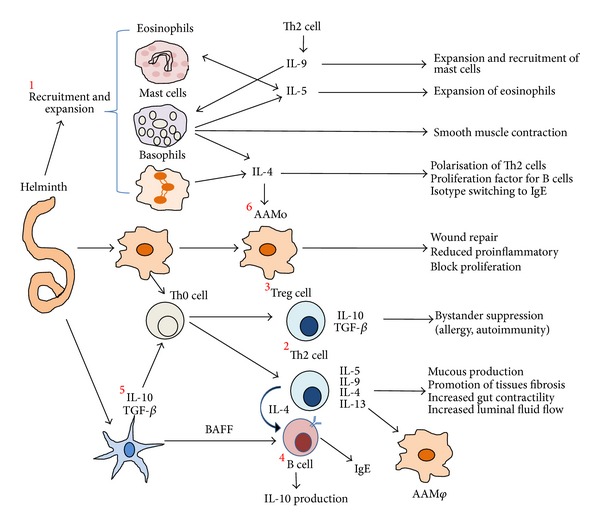Figure 2.

Helminth infections are strong inducers of a Th2-type immune response. These infections are characterized by the expansion and activation of eosinophils, basophils, and mast cells (1). Their upregulation due to high levels of immunoglobulin E (IgE) and the proliferation of T cells that secrete IL-4, IL-5, IL-9, and IL-13 are part of the host immune response against the parasite (2). However, helminth infections tend to be long-lived and largely asymptomatic because helminth infections are sustained through a parasite-induced immunomodulatory network, in particular through activation of regulatory T cells (3) and systemically elevated levels of IL-10 produced by B regulatory cells (4). They are additionally affected by the expression of the regulatory cytokines IL-10 and TGF-β, produced by regulatory dendritic cells (5) and alternatively activated Mφ (AAMφ) (6).
